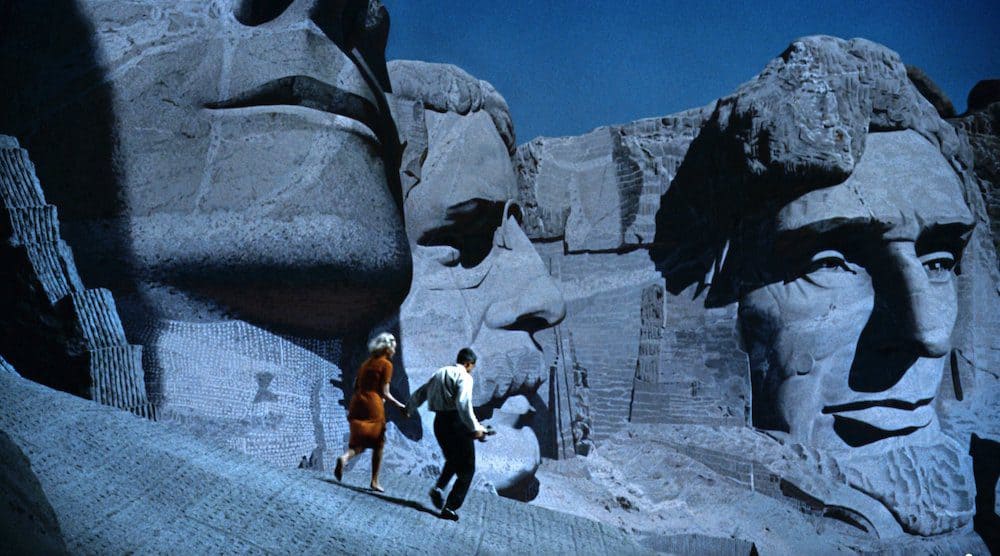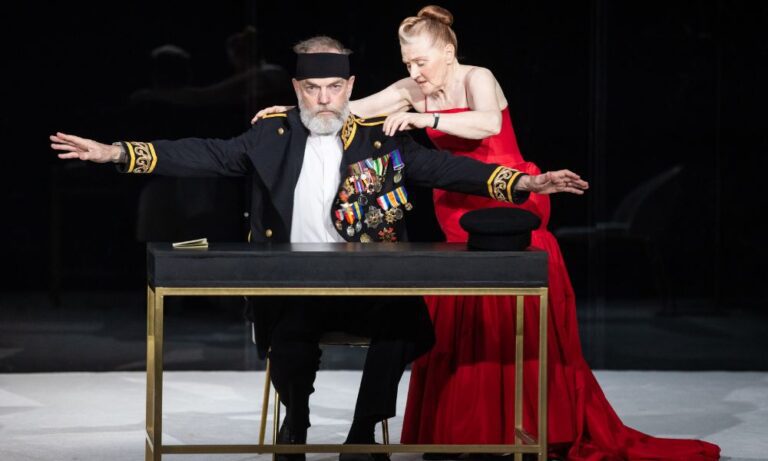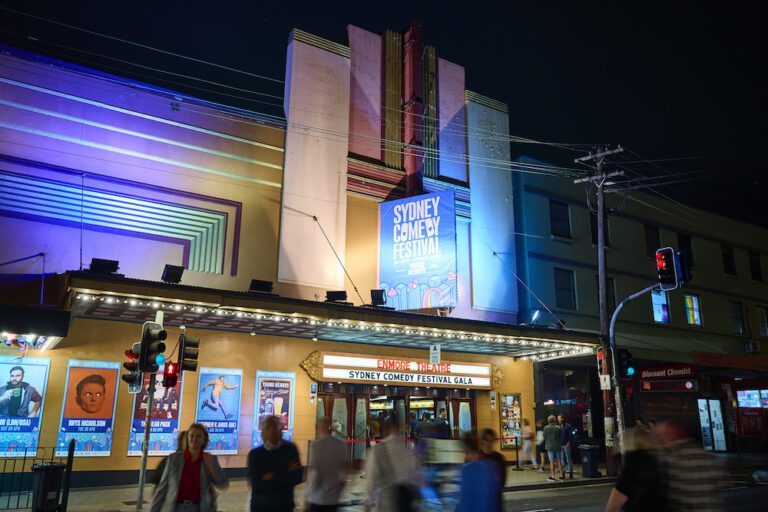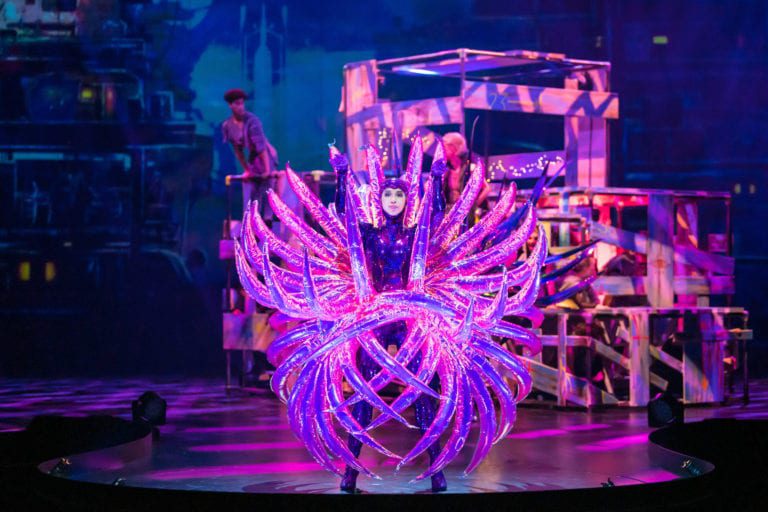We go to the cinema to escape to other worlds, to be transported to far-flung and fantastical locations. The way in which these places are created has always required skill and imagination. These days we’re used to elaborate CGI, but once upon a time Hollywood relied on a static method to place its characters – the backdrop.
Art of the Hollywood Backdrop: Cinema’s Creative Legacy, currently showing at the Boca Raton Museum of Art in Florida, shines a light on rarely seen (and rarely celebrated) masterpieces in the world of cinema. Kept secret by Hollywood studios, the backdrops on show were never meant to be displayed in such a way, created only for the camera lens and not the human eye. The backdrops were rescued from studio lots by a passionate group of Hollywood insiders. “It is miraculous that these historic monumental paintings were not lost forever, as so many Hollywood treasures have disappeared,” says Irvin Lippman, executive director of the Boca Raton Museum of Art. “The concept for this show had its genesis with a CBS Sunday Morning segment that called attention to the campaign to preserve scenic backdrops that had laid rolled up in the basement of MGM’s studios.”
Curated by Thomas A. Walsh and Karen L. Maness, Art of the Hollywood Backdrop is the first dedicated museum exhibition of its kind honouring these monumental canvases for the camera and the artists who created them. The show features 22 scenic backdrops from iconic movie moments created between 1938 and 1968. Highlights include scenes of Mount Rushmore, Ben-Hur’s Rome, the von Trapp family’s Austrian Alps, and Gene Kelly’s Paris street dance. “This show is about the joy of reliving something you grew up with, that you always thought was real,” says Walsh. “It’s about getting as close to that magical moment in time as you can. Being in the same space with that giant, familiar scene. It is difficult for people to get their minds around the awesome size of these magical spaces, until they see them in person. People are often shocked and surprised by the scale and visual impact of these massive creations.”
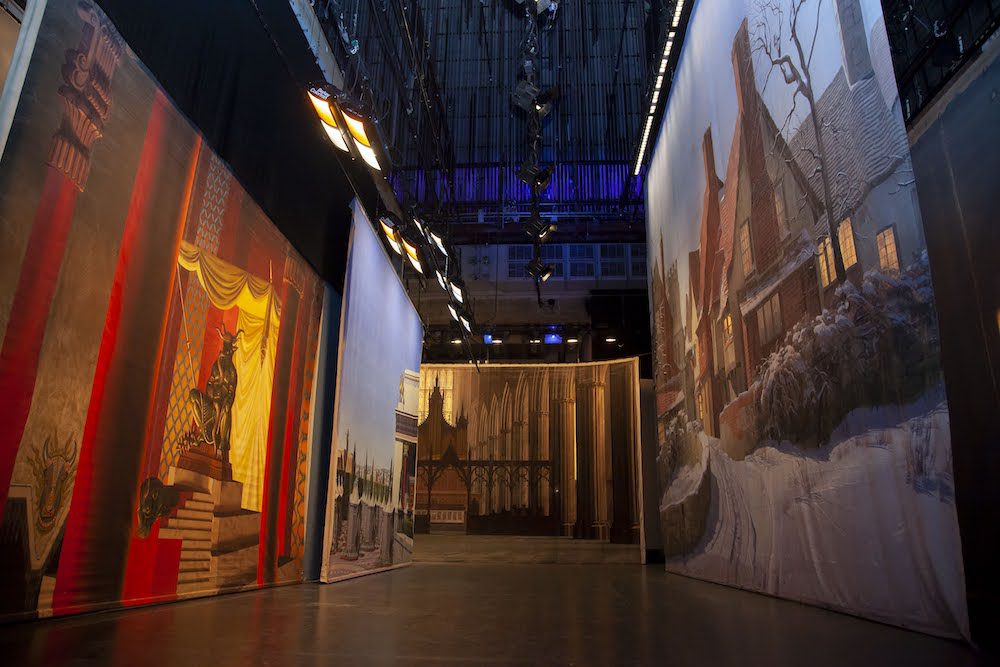
Most of the artists who created these stunning vistas were trained professionals, yet they went uncredited. Occasionally this was due to union agreements, but mainly it was studios wanting to keep a firm grip on the secret techniques that were handed down from master to apprentice on the backlots. “This has become my passion project, to tell their stories. I will be their champion in this lifetime,” says Maness. “Historically, as a woman I would have never been allowed to work alongside them in that era. As a teacher, they have now become my masters. When you choose your mentors as ghosts, they can’t say no.” In 2012, the Art Directors Guild Archives, then under the direction of Walsh, launched the Backdrop Recovery Project, in partnership with scenic backings company JC Backings. The JC Backings Corporation had acquired more than 2000 backdrops from MGM storage in the 1970s. The goal of the Backdrop Recovery Project was to preserve the backings and make them available for study. One of the recipients of this cache of gigantic paintings was the University of Texas at Austin and therefore Maness, an Associate Professor of Practice at the university. “[JC Backings president] Lynne Coakley, Karen L. Maness and Thomas A. Walsh have played a significant role in preserving this inventory from Hollywood’s golden age. Their vision and partnership with the Boca Raton Museum of Art made this exhibition possible,” says Lippman.
Twenty backdrops have been loaned by the Texas Performing Arts Hollywood Backdrop Collection at the University of Texas for the exhibition. Among them is the famous Mount Rushmore from Alfred Hitchcock thriller North by Northwest, starring Cary Grant and Eva Marie Saint. “This is the grandaddy, the Babe Ruth of all Hollywood backdrops,” says curator Maness. “Especially because it was such a key player in the telling of this story.” To prepare the backdrop for the exhibition, it was cleaned, sealed, touched up with paint and had tears repaired.
Another exhibition highlight is a 1952 backdrop from Singin’ in the Rain in front of which Donald O’Connor delivered a brilliant and iconic performance of ‘Make ’Em Laugh’. But movie buffs may also recognise the 1938 tapestry from North by Northwest, where it was used for the auction house scene – reusing backdrops was a relatively common practice in the film and television industry at the time.
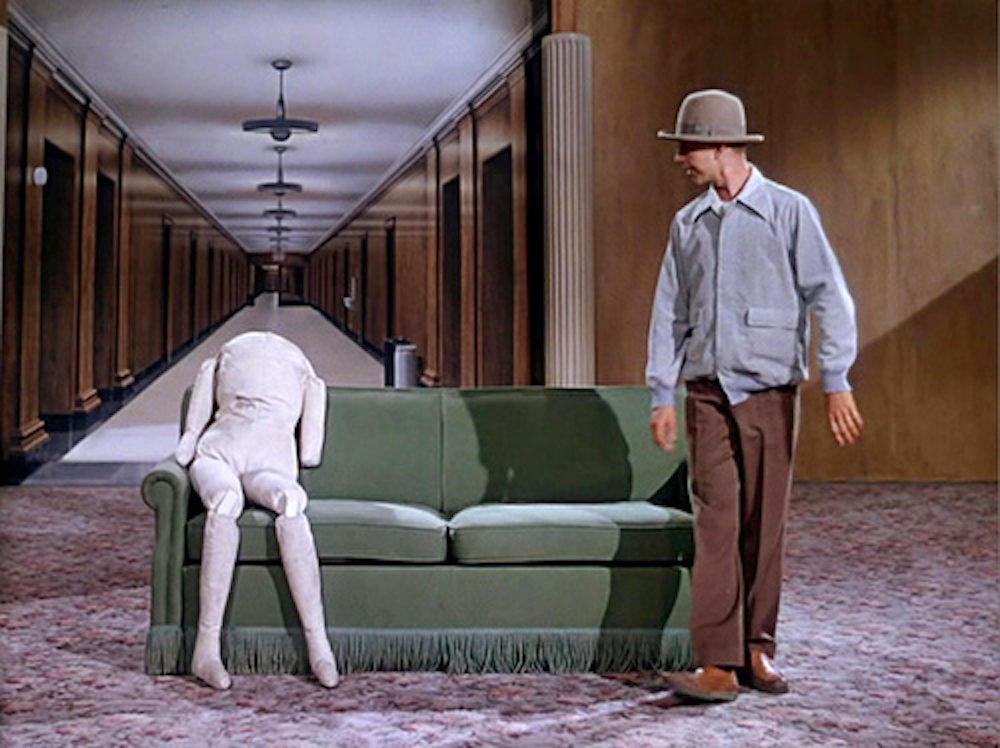
Maness conducted extensive oral history interviews with the last surviving artists who created these incredible works, as well as their family members and their acolytes, to record and preserve their previously unacknowledged histories. “It was essential to capture these artists’ stories before they disappeared,” says Maness. Some of the artists came from a family tradition of the craft, with lineages spanning three generations of painters.
Creating paintings for such enormous canvases was often highly challenging. Some even suffered tragic consequences in the early years of the craft, before the studios developed more sophisticated working platforms: Lynne Coakley’s great-grandfather, John Coakley, fell to his death from a perilously high scaffold while painting a backdrop. “These are literally some of the largest paintings ever created in the world, similar to cyclorama paintings,” explains Walsh. “Aside from the technicians working in the soundstages, no-one else has set eyes upon this collection. This is the first time the public can see this collection in person.”
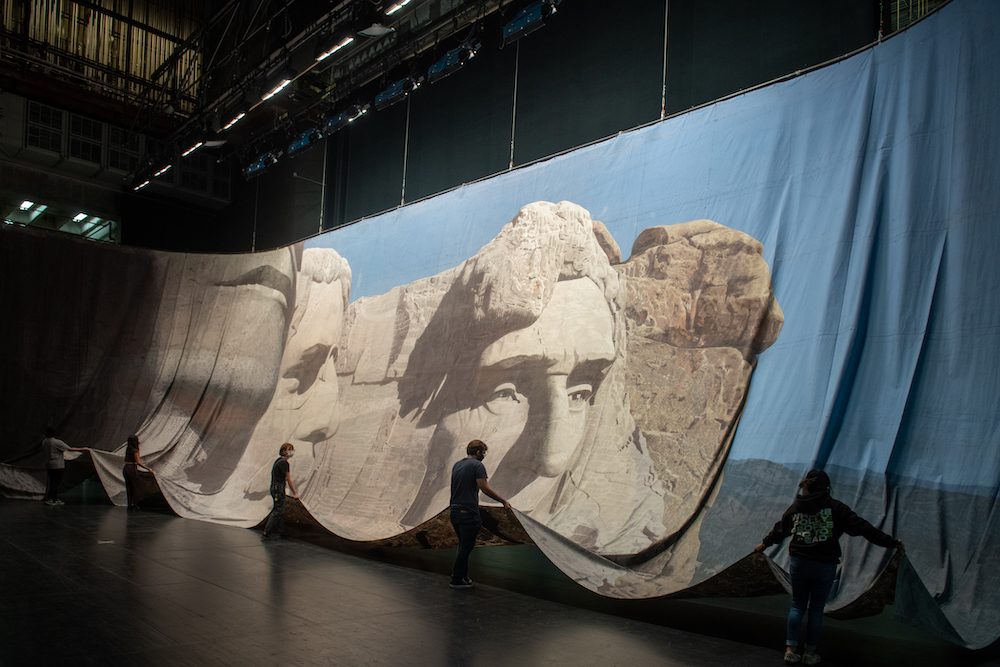
The exhibition demonstrates an impressionistic style of painting which appears photorealistic from a distance. This concept of “photorealism for the camera” was spearheaded by George Gibson, longtime head of MGM’s scenic design department, who took scenic art to a new level. In the heyday of MGM, they had three shifts of artists working day and night, non-stop. “In this form of painting, the deadlines and physicality required speed and confidence. The canvas was attacked with wild abandon, not courted,” said Walsh. “Their unique industrial techniques permitted them to be Norman Rockwell at one moment, and then Turner, Rembrandt or Vermeer at another.”
Walsh, who is a leading production designer in the entertainment industry and has long been a mentor to up-and- coming designers, says people who are interested in carving out a career in visual effects today would do well to appreciate the artistry of those who created these immense backdrops. “After the digital/ synthetic revolution took over filmmaking, the young designers today who are most successful in the computerised realm are those who continue to hone their real-life painting and drawing skills,” he says. “They know about perspective and really understand art, nature, light and architecture. They can still be tactile. The idea that you can still get personal and dirty with your art is a revelation to many of the current generation. Those who do, are better at their computer arts.”
Art of the Hollywood Backdrop
Boca Raton Museum of Art
Until 22 January 2023


